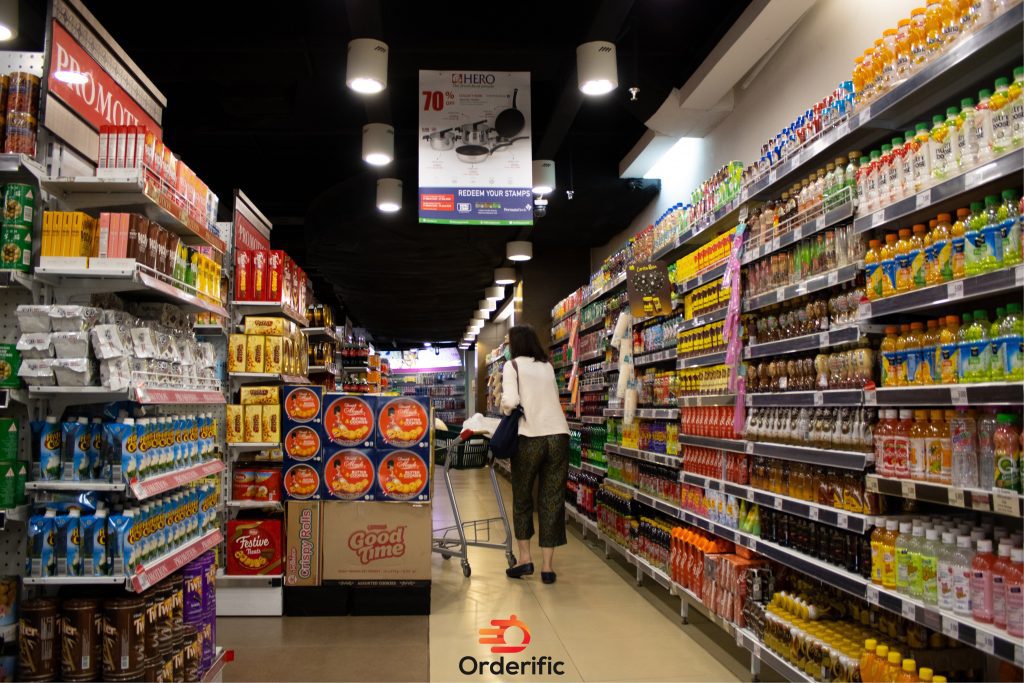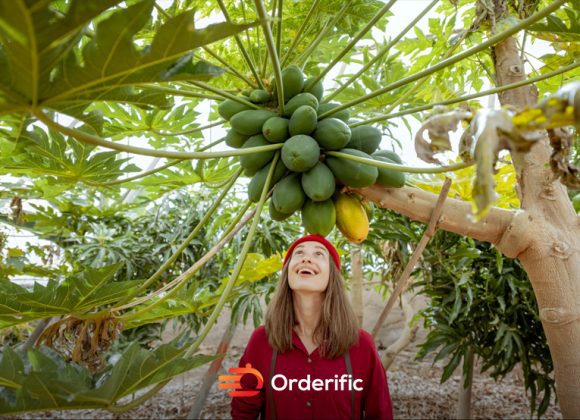Introduction
The narrative of supermarket history, evolution, technological advancements, from the establishment of King Kullen in New York City to the rise of Amazon Go, is a compelling journey in retail innovation. This transformative saga began with simple grocery stores in the United States and expanded into full-fledged supermarkets, revolutionizing grocery shopping. Innovators like Clarence Saunders and his Piggly Wiggly stores paved the way for self-service technology, enhancing the shopping experience for customers. Technological advances have continued, with online grocery shopping platforms and apps becoming increasingly prevalent. Meanwhile, the retail industry continues to evolve, with supply chain innovations and new technology enhancing the customer experience. The future promises even more change, with artificial intelligence, augmented reality, and other technological advances poised to reshape the supermarket industry and redefine our grocery shopping experience.
The Shopping Cart

One of the first significant innovations in the evolution of supermarkets was the introduction of the shopping cart. Before this invention, customers shopped with hand-held baskets, limiting the quantity they could purchase during a single visit. The shopping cart, introduced by supermarket owner Sylvan Goldman in 1937, represented a significant transformation in grocery shopping. Consumers could accumulate more products, increasing sales and enhancing their shopping experience. The shopping cart was not initially welcomed – shoppers were reluctant to use this new gadget. Goldman had to hire models to push the carts around and demonstrate their convenience, but once customers became accustomed to this convenience, there was no turning back.
Technological Transformation
With the advent of technology, the humble shopping cart itself has undergone a transformation. From the initial wireframe and metal designs to plastic and now digital carts on online platforms, each modification has been a testament to the evolution of grocery shopping. Innovative technology has brought about self-scanning carts, transforming them into mobile checkout counters. These smart carts can now scan items as they are placed inside, calculate the total cost, and even process payments – eliminating long checkout queues and enhancing the shopping experience.
Supermarket Layouts And Designs
Another aspect of the supermarket history, evolution has been the development of store layouts and designs. Clarence Saunders, the grocery store owner mentioned earlier, played a pivotal role in this aspect. Before Saunders’ Piggly Wiggly stores, customers handed over their shopping list to store clerks who then gathered the items. Saunders revolutionized this process, providing a space where customers could browse aisles and select items themselves – a concept so ingrained in our shopping habits today. This innovative layout allowed for a wider product range and more efficient use of retail space. Today, store layouts are meticulously planned, with every shelf and aisle designed to maximize product visibility and stimulate impulse purchases.
The Rise Of Self-Checkout Systems
The next major leap in supermarket history, evolution was the development of self-checkout systems. Introduced in the 1990s, these systems allowed customers to scan and bag their own items, accelerating the checkout process. Despite initial resistance, self-checkout systems have become increasingly popular, with many customers appreciating the speed and convenience they offer. Advances in technology are further enhancing these systems, with features like touch screens, voice instructions, and the ability to pay without needing a cashier’s assistance. Self-checkout is not without its challenges, however, including customer errors and potential theft, but supermarkets are continually innovating to address these issues.
E-commerce And Online Grocery Shopping
The rise of the internet era has ushered in a new wave of evolution for supermarket history. E-commerce platforms and online grocery stores have expanded rapidly, allowing customers to shop from the comfort of their homes. Online grocery shopping has been a game-changer, with platforms offering a wide range of products, home delivery services, and even options to schedule delivery times. The COVID-19 pandemic has further accelerated this trend, with many more customers embracing online grocery shopping to adhere to social distancing measures.
The Future Of Supermarkets
Looking forward, the supermarket history is set for even more transformation. Emerging technologies like artificial intelligence, augmented reality, and blockchain are poised to further revolutionize grocery shopping. AI can help supermarkets predict consumer behavior, manage inventory, and personalize customer experiences. Augmented reality can enhance in-store navigation and product information. Blockchain can improve food safety by providing transparent and traceable supply chains. The future of supermarkets is indeed exciting, promising a shopping experience that is more seamless, personalized, and sustainable. From the humble beginnings of the King Kullen stores to the tech-driven supermarkets of today, the evolution of supermarkets is an ongoing journey, continually shaped by technological innovation and consumer needs.
Checkout Technology And Barcode Scanning
In the ongoing evolution of supermarkets, the advent of barcode scanning technology marked a significant milestone. A pivotal moment in retail history, the first barcode scanner in a grocery store was in 1974 at a Marsh’s supermarket in Troy, Ohio. The first product to be scanned was a pack of Wrigley’s Juicy Fruit gum. This technological innovation was the brainchild of Bernard Silver and Norman Joseph Woodland, and it revolutionized the checkout process in grocery stores.
Barcode scanning allowed for faster and more accurate checkout, reducing human error and enhancing the customer experience. It also enabled more efficient inventory management, giving retailers a real-time view of their stock levels and allowing them to quickly identify and replenish items as needed. This evolution in checkout technology proved crucial in meeting the growing consumer demand for efficiency and convenience in grocery shopping.
The Rise Of Self-Service Technology In Supermarkets
This era also saw the rise of self-service technology in supermarkets, facilitated by Clarence Saunders’ innovative ideas. Saunders, the founder of Piggly Wiggly grocery stores, pioneered the concept of self-service shopping. This self-service model transformed the shopping experience, making grocery shopping faster and more convenient for customers and increasing sales for retailers.
Supermarkets equipped with self-service technology allowed customers to browse aisles, select their items, and then proceed to self-checkout counters where they could scan and bag their own items. This innovation not only improved the customer experience but also increased efficiency, allowing supermarkets to serve more customers in less time.
The Influence Of Major Grocery Chains
Major grocery chains like King Kullen, Piggly Wiggly, and Walmart Supercenter played a crucial role in shaping the landscape of grocery retail in the United States. These grocery chains were early adopters of new technology, embracing innovations like barcode scanning and self-service technology to improve their customer service and operational efficiency.
King Kullen, often credited as America’s first supermarket, was a trailblazer in the grocery retail industry. Founded in New York City in 1930, King Kullen revolutionized grocery shopping with its vast product assortment and low prices. Meanwhile, Piggly Wiggly, another American supermarket chain, was renowned for its innovative store layouts and self-service model. Finally, Walmart Supercenter, known for its large-format stores offering a wide range of products, set the standard for one-stop shopping convenience.
The Impact Of Online Grocery Shopping
In the digital age, the rise of online grocery shopping has reshaped the supermarket industry. Pioneered by e-commerce giants like Amazon Fresh and Amazon Go, online grocery platforms have made grocery shopping more accessible and convenient than ever before. Customers can now browse products, compare prices, and make purchases from the comfort of their homes, with their orders delivered straight to their doorsteps.
Online grocery shopping has not only revolutionized the shopping experience but also the retail supply chain. With real-time inventory management, predictive analytics, and sophisticated logistics, online grocery platforms can meet customer demand more efficiently and sustainably. The COVID-19 pandemic has further accelerated the growth of online grocery shopping, as more customers turn to these platforms for their grocery needs amid social distancing measures.
The Future Of Supermarket Technology
Looking forward, the supermarket industry is set for even more transformation. Emerging technologies like artificial intelligence (AI), augmented reality (AR), and blockchain are poised to revolutionize grocery shopping. For example, AI can help supermarkets predict customer behavior, manage inventory, and personalize the customer experience. AR can enhance in-store navigation and product information, enriching the shopping experience. Lastly, blockchain can provide transparent and traceable supply chains, boosting customer trust and food safety.
From the humble beginnings of the King Kullen stores to the tech-driven supermarkets of today, the evolution of supermarkets is an ongoing journey, continually shaped by technological innovation and consumer needs. As supermarkets embrace these new technologies, the future of grocery shopping promises to be even more seamless, personalized, and sustainable.
Loyalty Programs And The Evolution Of Consumer Data
The evolution of supermarket history took a significant turn with the advent of loyalty programs. These programs aimed to improve the customer experience and cultivate a sense of loyalty among shoppers. The grocery store industry, with its intense competition and slim margins, saw this as an opportunity to incentivize repeat shopping and increase customer retention.
One of the first loyalty programs was introduced by Piggly Wiggly, a trailblazer in the grocery industry. Founded by the innovative Clarence Saunders, Piggly Wiggly’s loyalty program was as groundbreaking as its self-service shopping concept. Customers were offered stamps for every purchase, which could be collected and redeemed for household items. This practice not only enhanced the shopping experience but also fostered a loyal customer base for the grocery chain.
Loyalty Programs And Data Collection
Loyalty programs also marked the beginning of data collection in supermarket history. To join a loyalty program, customers would provide their personal details, which grocery stores use to understand customer behavior and preferences. This was a significant shift in the retail industry, with retailers becoming increasingly data-driven in their approach to customer service and marketing.
Let’s take the example of King Kullen, another key player in the grocery industry. King Kullen leveraged its loyalty program to gather valuable customer data, which it used to personalize offers and promotions. This practice not only improved the customer experience but also increased sales for the New York City-based grocer.
The Role Of Technology In Loyalty Programs
As technology advanced, so did loyalty programs. Supermarket history began to digitize their programs, offering rewards cards instead of stamps. This shift not only made the programs more efficient but also allowed for more accurate and extensive data collection.
One notable example of this is the Walmart Supercenter loyalty program. The retailer’s rewards cards enabled it to collect real-time data on customers’ shopping habits, preferences, and frequency of visits. This data has been invaluable in shaping Walmart Supercenter’s marketing strategy and enhancing its customer service.
The Rise Of Online Grocery Shopping And Loyalty Programs
The rise of online grocery shopping has further transformed loyalty programs. Online platforms such as Amazon Fresh and Amazon Go have digitized their loyalty programs, offering customers a seamless and integrated shopping experience. Customers can now earn and redeem points online, track their rewards, and receive personalized offers and recommendations.
In turn, these platforms have access to a wealth of customer data, allowing them to provide a more personalized and efficient shopping experience. For example, Amazon Go uses artificial intelligence to analyze customer behavior and make product recommendations, thereby enhancing the online grocery shopping experience.
The Future Of Loyalty Programs
Looking forward, loyalty programs are set to become even more personalized and integrated. Emerging technologies like artificial intelligence and augmented reality will enable supermarkets to offer a more immersive and personalized shopping experience. For example, augmented reality can be used to gamify loyalty programs, offering customers a more engaging and interactive experience.
As supermarkets continue to innovate, the future of loyalty programs promises to be even more customer-centric, data-driven, and technologically advanced. From the humble beginnings of the stamp systems at Piggly Wiggly and King Kullen to the digital rewards cards of Walmart Supercenter and Amazon Go, the evolution of loyalty programs is an integral part of the supermarket industry’s ongoing journey.
Loyalty Programs And The Evolution Of Consumer Data
In addition to fostering loyalty among customers, these programs have also spurred the evolution of consumer data in the retail industry. As supermarkets collected data through their loyalty programs, they gained valuable insights into consumers’ shopping habits and preferences. This information has been instrumental in shaping marketing strategies, optimizing product assortments, and personalizing customer service in grocery stores across the United States and beyond.
Data collection and analysis have become even more sophisticated with the advent of new technology. Supermarkets can now track customers’ purchases in real time, predict future shopping behavior, and tailor their offerings accordingly. This data-driven approach has undoubtedly revolutionized the supermarket industry, offering a more personalized and efficient shopping experience for customers and giving retailers a competitive edge in the increasingly crowded grocery market.
Looking forward, the role of consumer data in the supermarket industry is set to grow even more significant. Emerging technologies like artificial intelligence and blockchain promise to further enhance data collection and analysis, offering even more personalized and seamless shopping experiences. As supermarkets continue to embrace these technological innovations, the future of grocery shopping promises to be even more data-driven, efficient, and customer-centric.
Self-Checkout
The introduction of self-checkout systems in the late 20th century was another significant point in the evolution of supermarkets. This technology allowed customers to scan, bag, and pay for their items without the assistance of a cashier. The first self-checkout systems were installed in the mid-1990s, and their adoption has been steadily increasing ever since.
Self-checkout systems have numerous advantages for both customers and retailers. For customers, they offer a faster, more efficient shopping experience, particularly for those with smaller baskets. For retailers, self-checkouts can lead to labor cost savings and increased operational efficiency. In addition, they can also free up staff to focus on other areas of customer service, enhancing the overall shopping experience.
However, self-checkouts are not without their challenges. Some customers find the systems difficult to use, and they can also be prone to theft. Despite these issues, self-checkout technology continues to evolve, with new features such as touchless payment options and enhanced security measures being introduced.
Major grocery chains like King Kullen, Piggly Wiggly, and Walmart Supercenter were early adopters of self-checkout technology, which further bolstered their reputation as innovators in the grocery industry. As we look to the future, it’s likely that self-checkout technology will continue to be an integral part of the grocery shopping experience, with further advancements anticipated in response to changing customer needs and expectations.
Media Usage And The Internet
The advent of the internet and the proliferation of media usage have greatly impacted the evolution of supermarkets. Consumers today have access to a plethora of information and options at their fingertips. As a result, they are more informed and have greater expectations from their grocery shopping experiences. Supermarkets have adapted to this change by offering a wider range of products, enhancing their online presence, and providing a more personalized shopping experience both online and offline.
The internet has also facilitated the rise of online grocery shopping platforms, which offer unparalleled convenience and accessibility. Customers can browse and purchase items from the comfort of their homes, with their orders delivered right to their doorstep. This shift towards online grocery shopping has been further accelerated by the COVID-19 pandemic, with more customers opting for contactless shopping options for their safety.
Social media usage has also played a significant role in shaping supermarkets. Platforms such as Facebook, Twitter, and Instagram provide a channel for supermarkets to engage directly with their customers, receive feedback, and promote their products and services. They have also become a platform for customers to share their experiences and reviews, influencing the shopping decisions of others.
Moving forward, the impact of media usage and the internet on supermarkets is poised to grow even further. As technology continues to advance, we can expect supermarkets to leverage these platforms to offer a more seamless, personalized, and engaging shopping experience.
Checkout-Free Technology
The latest frontier in the evolution of supermarkets is the advent of checkout-free technology, a game-changer in the world of retail. Pioneered by Amazon Go, this technology uses a combination of computer vision, deep learning algorithms, and sensor fusion, similar to self-driving cars, to automatically detect when products are taken from or returned to the shelves. Shoppers can simply walk into the store, pick up the items they need, and leave – the items are automatically charged to their Amazon accounts. This seamless and frictionless shopping experience not only saves time but also eliminates the need for physical checkouts and queues. Although currently in its early stages, checkout-free technology holds immense potential for the future and is poised to redefine the traditional retail landscape.
Conclusion
In conclusion, Supermarket history, evolution, technological advancements, from the inception of King Kullen to the rise of checkout-free technology, has consistently been marked by innovative strides to enhance the consumer experience. Grounded in the advancement of technology and data analytics, the grocery industry has exponentially evolved over the years. Loyalty programs, self-checkout systems, online platforms, and the advent of checkout-free technology all reflect the industry’s dedication to improving customer convenience and personalization. As we look towards the future, it is evident that this journey is far from over. Technological innovations will continue to shape the way we shop, promising an increasingly seamless, efficient, and personalized customer experience.
To keep up with the latest in grocery technology and to see how your business can benefit, Book a demo with Orderific today. Discover how we can help you stay ahead in this ever-evolving industry.
FAQs
What is the evolution of supermarkets?
The Supermarket history, evolution, technological advancements involves the transformation from basic grocery stores to technologically advanced retail spaces.
Where did the convenience store concept come from?
The convenience store concept originated from the United States in the early 20th century.
What did supermarkets do before computers?
Before computers, supermarkets used manual methods for inventory management, pricing, and checkouts.
Why is the wide product variety important in a supermarket?
Wide product variety is important in a supermarket as it provides customers with a convenient, one-stop shopping experience.













